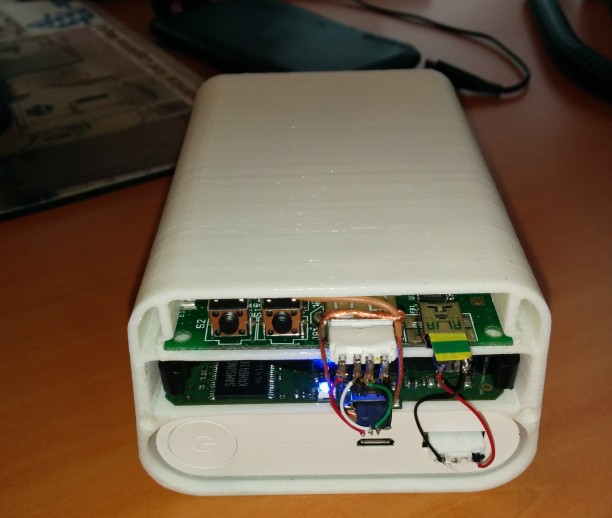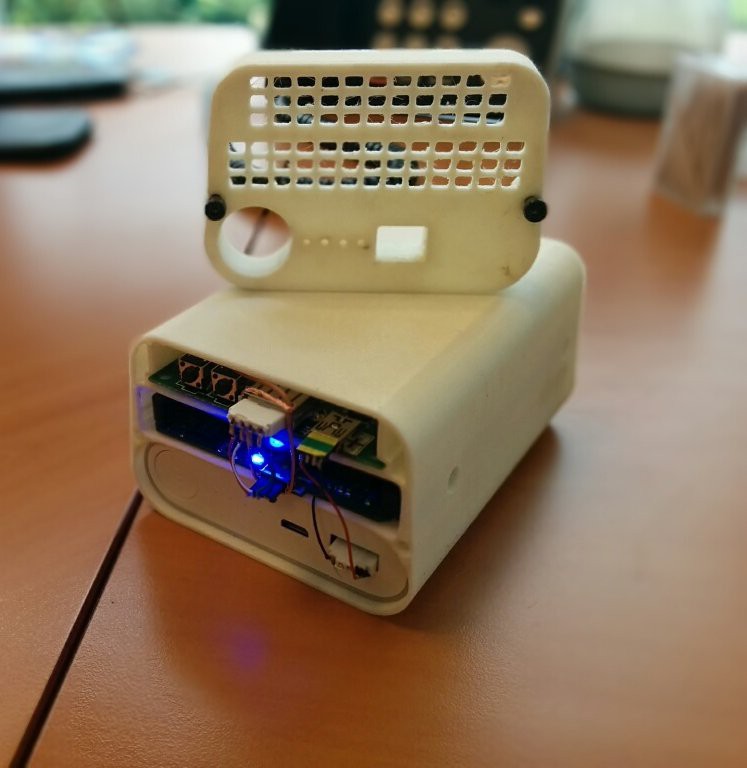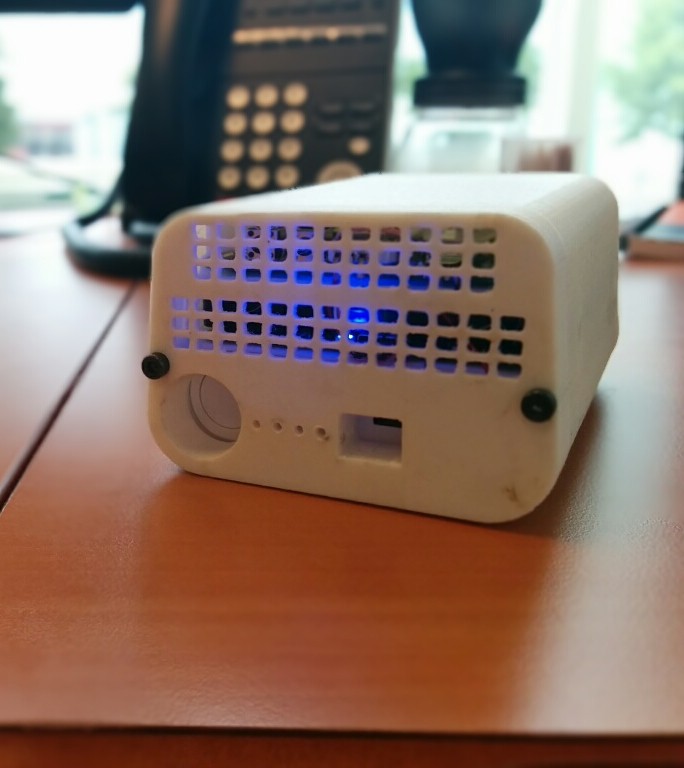-
Assembly
06/10/2014 at 16:43 • 0 commentsThe printed enclosure was finished way before I expected, I found myself racing on my bike to the pickup location on a tropical day.
It took a couple of minutes of sanding to have all the parts fit inside, but it was a glorious moment when done.
![]()
Not wanting to desolder the surface mounted USB ports I took a hobby knife to some mini USB cables. Thankfully the business end of the cables had some nice solder pads to them. I still need to add some shielding to the cable that runs from the carambola (top) to the hard drive (middle), read and write times are pretty appalling now.
![]()
Ain't she pretty?
![]()
Weight turned out to be 500 grams, the battery pack packs the most weight at 250 grams.
-
3D printable enclosure
06/08/2014 at 23:26 • 0 commentsInstead of smacking the components together in a sandwich box I decided to design a fancy 3D printed enclosure for my components. Stacking them up in a pyramid fashion like you see in the HTC One for example.
Here's a little render:
![]()
As you might be able to tell; the battery pack goes into the bottom slot, hard drive in the middle and the little OpenWRT board (hopefully) slots nicely into those rails in the top compartment.
I just submitted it to a 3D printing press, hoping to have it over here in a day or two.
![]()
Dimensions:
- L: 115mm ( 4.5" )
- W: 75mm ( 3.0" )
- H: 55mm ( 2.2" )
-
First test
06/08/2014 at 22:58 • 0 commentsThe battery's charged, hard drive has lost its enclosure and gained some music, the Carambola has the right config.
This is the current setup, i'm working on an enclosure:
![]()
I already had tried with a usb key, not sure if a 1TB hard drive could be handled by the carambola. If pictures had sound you'd hear the sweet sound of music being streamed from a battery powered nas :)
-
Power consumption: a quick calculation
06/06/2014 at 10:49 • 0 commentsSo for how long would my NAS be able to run autonomously?
Carambola2 data sheet tells me power consumption is 0,5W. This boils down to a current of 100mA
The portable hard drive, based on a review, consumes anywhere between 1,5 and 2W. Lets stay on the high side to be safe and assume an average usage of 2W or 400mA.
Our power bank has a rating of 10400mAh, thus 10400 / (100 + 400) ≈ 20 hours (mAh / mA)
What's more, the Xiaomi bank supports a thing called "pass through charging". This means it will be able to supply the NAS with power even while being charged. It just takes what it needs to charge it's battery and leaves the rest available to our SOC and hard drive.
This means I can leave it hooked up in the car and take it with me as we go for a walk.
-
Proof of concept
06/06/2014 at 10:41 • 0 commentsThis project relies on being able to access other devices associated with a mobile hotspot.
To test this I configured a basic web server and samba share on my laptop and had it connect to my phone.
Next I used ES File Explorer to access the samba share and browsed to find the standard "it works" Apache web page.
I managed to view and create files on the shared folder.
Crucially, you'd want the device hosting the samba share to have the same IP every time. The android wifi-hotspot uses a pool from 192.168.43.2 - 192.168.43.10. Setting a static IP on the samba server turned out to be no problem at all, by moving it out of the pool e.g. 192.168.43.20 it was still reachable.
Portable travel NAS
A battery powered NAS that connects to your smartphones mobile hotspot
 Guus van der Sluijs
Guus van der Sluijs




